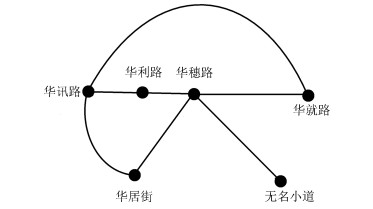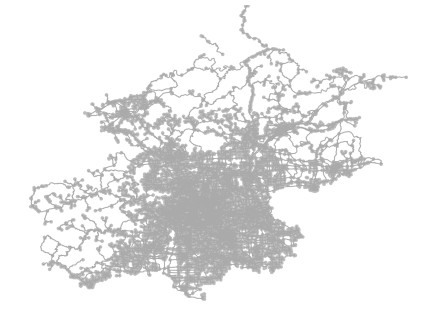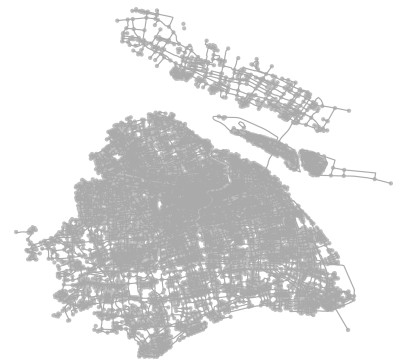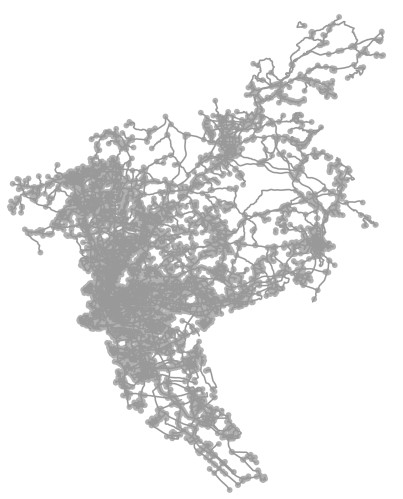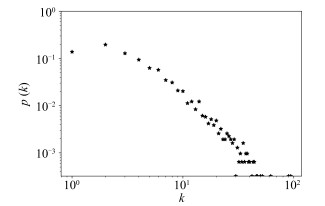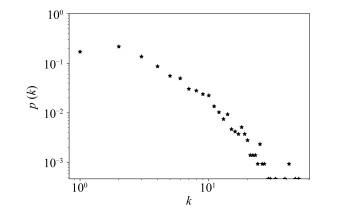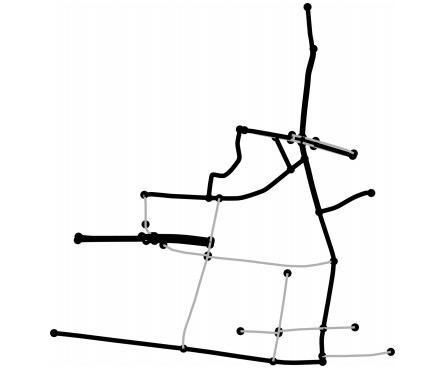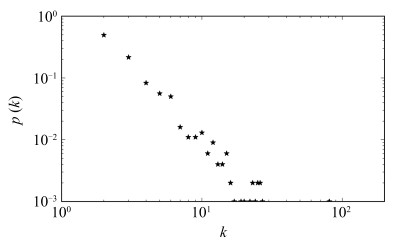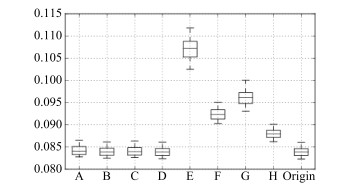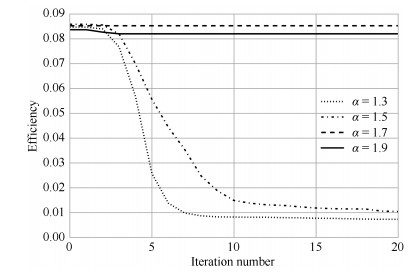-
摘要: 封闭小区降低了城市路网密度和可达性,如何开放封闭小区成为一个热点问题.本文对若干中国大型城市的道路网络进行实证研究,发现这些网络的度分布具有无标度性质.基于此性质提出了一个适用于封闭小区开放问题的城市道路复杂网络模型.该模型使得城市道路网络包含小区路网,且道路信息易于查询与筛选,这有利于制定并比较不同的小区开放策略.利用该模型,研究了网络效率的计算和相继故障过程的建模问题,以比较不同的开放策略对城市路网的影响.最后,针对效率和稳定性两个因子,分析城市道路网络的优化特征.结果表明,开放位于非中心地区的小区,开放程度最大,新开交叉口位于连接数不多的道路时,网络效率及稳定性最佳.Abstract: Closed communities have reduced the density and accessibility of urban road networks. It is a hot topic how to open the closed community. In this paper, we conduct an empirical research on the road networks of several prosperous cities in China, and the result indicates that the degree distribution of those networks has a scale-free property. Based on this property, a city road network model is proposed for the closed community openning problem. In this model, an urban road network contains the residential road network, and the road information is easy to query and filter, which is helpful to the development and comparison between different closed communities opening strategies. Using this model, the computation of the network efficiency, the modeling of the cascade failure process, and their applications in comparing the influence of different opening strategies on urban road networks are investigated. Finally, the optimization characteristics of urban road network are analyzed in terms of efficiency and stability. It is shown that network efficiency and stability will be the best when maximizing the openness of communities located in non-center areas and where new inlets are located on roads with few connections.
-
Key words:
- Closed community /
- complex network /
- cascade failure /
- network efficiency
1) 本文责任编委 董海荣 -
表 1 不同的小区开放策略
Table 1 Difierent community opening strategies
策略编号 小区位置 小区开放程度 交叉口位置 A 中心地段 完全开放 繁忙交叉口 B 中心地段 完全开放 清闲交叉口 C 中心地段 部分开放 繁忙交叉口 D 中心地段 部分开放 清闲交叉口 E 非中心地段 完全开放 繁忙交叉口 F 非中心地段 完全开放 清闲交叉口 G 非中心地段 部分开放 繁忙交叉口 H 非中心地段 部分开放 清闲交叉口 表 2 不同开放策略优化后网络的效率对比
Table 2 The comparison of the e–ciency among networks optimized by difierent strategies
策略 原网络 A B C D E F G H 效率 0.0839 0.0843 0.0840 0.0841 0.0840 0.1072 0.0924 0.0962 0.0880 提升率(%) 0 0.4768 0.1192 0.2384 0.1192 27.7712 10.1311 14.6603 4.8868 -
[1] 郭继孚, 刘莹, 余柳.对中国大城市交通拥堵问题的认识.城市交通, 2011, 9(2):8-14, 6 http://d.old.wanfangdata.com.cn/Periodical/csjt201102002Guo Ji-Fu, Liu Ying, Yu Liu. Traffic congestion in large metropolitan area in China. Urban Transport of China, 2011, 9(2):8-14, 6 http://d.old.wanfangdata.com.cn/Periodical/csjt201102002 [2] 缪朴.城市生活的癌症-封闭式小区的问题及对策.时代建筑, 2004, (5):46-49 doi: 10.3969/j.issn.1005-684X.2004.05.011Miao Pu. Cancer of urban life:problems of gated communities in china and their solutions. Time Architecture, 2004, (5):46-49 doi: 10.3969/j.issn.1005-684X.2004.05.011 [3] 李向朋. 城市交通拥堵对策-封闭型小区交通开放研究[硕士学位论文], 长沙理工大学, 中国, 2014. http://cdmd.cnki.com.cn/Article/CDMD-10536-1015394437.htmLi Xiang-Peng. UrbanTraffic Congestion Countermeasures-Opening Research of Enclosed Type District Traffic[Master thesis], Changsha University of Science and Technology, China, 2014. http://cdmd.cnki.com.cn/Article/CDMD-10536-1015394437.htm [4] 吴晓林.从封闭小区到街区制的政策转型:形势研判与改革进路.江汉论坛, 2016, (5):40-45 doi: 10.3969/j.issn.1003-854X.2016.05.007Wu Xiao-Lin. Policy transition from closed communities to block system:situation judgment and reform approach. Jianghan Tribune, 2016, (5):40-45 doi: 10.3969/j.issn.1003-854X.2016.05.007 [5] 朱怿. 从"居住小区"到"居住街区"[博士学位论文], 天津大学, 中国, 2006. http://cdmd.cnki.com.cn/Article/CDMD-10056-2007078772.htmZhu Yi. From Housing Estate to Housing Block[Ph.D. dissertation], Tianjin University, China, 2006. http://cdmd.cnki.com.cn/Article/CDMD-10056-2007078772.htm [6] 王红卫. 城市型居住街区空间布局研究[硕士学位论文], 华南理工大学, 中国, 2012. http://cdmd.cnki.com.cn/Article/CDMD-10561-1012450701.htmWang Hong-Wei. The Research on the Spatial Distribution of the Urban Residential Block[Master thesis], South China University of Technology, China, 2012. http://cdmd.cnki.com.cn/Article/CDMD-10561-1012450701.htm [7] Porta S, Crucitti P, Latora V. The network analysis of urban streets:a dual approach. Physica A:Statistical Mechanics and Its Applications, 2006, 369(2):853-866 doi: 10.1016/j.physa.2005.12.063 [8] Barabási A L, Albert R. Emergence of scaling in random networks. Science, 1999, 286(5439):509-512 doi: 10.1126/science.286.5439.509 [9] Jiang B. A topological pattern of urban street networks:universality and peculiarity. Physica A:Statistical Mechanics and Its Applications, 2007, 384(2):647-655 doi: 10.1016/j.physa.2007.05.064 [10] Crucitti P, Latora V, Porta S. Centrality in networks of urban streets. Chaos:An Interdisciplinary Journal of Nonlinear Science, 2006, 16(1):Article No. 015113 doi: 10.1103-PhysRevE.73.036125/ [11] Crucitti P, Latora V, Porta S. Centrality measures in spatial networks of urban streets. Physical Review E, 2006, 73(3 Pt 2):Article No. 036125 doi: 10.1103-PhysRevE.73.036125/ [12] 高中华, 李满春, 陈振杰, 李飞雪, 孙电.城市道路网络的小世界特征研究.地理与地理信息科学, 2007, 23(4):97-101 doi: 10.3969/j.issn.1672-0504.2007.04.024Gao Zhong-Hua, Li Man-Chun, Chen Zhen-Jie, Li Fei-Xue, Sun Dian. Research on small world characteristic of urban road network. Geography and Geo-information Science, 2007, 23(4):97-101 doi: 10.3969/j.issn.1672-0504.2007.04.024 [13] Watts D J, Strogatz S H. Collective dynamics of "small-world" networks. Nature, 1998, 393(6684):440-442 doi: 10.1038/30918 [14] 詹斌, 蔡瑞东, 胡远程, 曹梦鑫.基于城市道路网络脆弱性的小区开放策略研究.物流技术, 2016, 35(7):98-101 doi: 10.3969/j.issn.1005-152X.2016.07.023Zhan Bin, Cai Rui-Dong, Hu Yuan-Cheng, Cao Meng-Xin. Residential community open-up strategy based on fragility of urban road network. Logistics Technology, 2016, 35(7):98-101 doi: 10.3969/j.issn.1005-152X.2016.07.023 [15] Latora V, Marchiori M. Efficient behavior of small-world networks. Physical Review Letters, 2001, 87(19):Article No. 198701 doi: 10.1103/PhysRevLett.87.198701 [16] Crucitti P, Latora V, Marchiori M. Model for cascading failures in complex networks. Physical Review E, 2004, 69(4 Pt 2):Article No. 045104 http://d.old.wanfangdata.com.cn/Periodical/xtfzxb201107034 [17] 汪小帆, 李翔, 陈关荣.复杂网络理论及其应用.北京:清华大学出版社, 2006. 11-12Wang Xiao-Fan, Li Xiang, Chen Guan-Rong. Complex Network Theory and Its Application. Beijing:Tsinghua University Press, 2006. 11-12 [18] Barabási A L, Albert R, Jeong H. Scale-free characteristics of random networks:the topology of the world-wide web. Physica A:Statistical Mechanics and Its Applications, 2000, 281(1-4):69-77 doi: 10.1016/S0378-4371(00)00018-2 [19] Ebel H, Mielsch L I, Bornholdt S. Scale-free topology of e-mail networks. Physical Review E, 2002, 66(3 Pt 2A):Article No. 035103 doi: 10.1103-PhysRevE.66.035103/ [20] Porta S, Crucitti P, Latora V. The network analysis of urban streets:a primal approach. Environment and Planning B:Planning and Design, 2006, 33(5):705-725 doi: 10.1068/b32045 [21] 赵月, 杜文, 陈爽.复杂网络理论在城市交通网络分析中的应用.城市交通, 2009, 7(1):57-65 doi: 10.3969/j.issn.1672-5328.2009.01.017Zhao Yue, Du Wen, Chen Shuang. Application of complex network theory to urban transportation network analysis. Urban Transport of China, 2009, 7(1):57-65 doi: 10.3969/j.issn.1672-5328.2009.01.017 [22] Boeing G. OSMnx:new methods for acquiring, constructing, analyzing, and visualizing complex street networks. Computers, Environment and Urban Systems, 2017, 65:126-139 doi: 10.1016/j.compenvurbsys.2017.05.004 [23] Haklay M, Weber P. Openstreetmap:user-generated street maps. IEEE Pervasive Computing, 2008, 7(4):12-18 doi: 10.1109/MPRV.2008.80 [24] Rodrigue J P, Comtois C, Slack B. The Geography of Transport Systems (4th edition). Routledge:Taylor and Francis, 2016. [25] Johnson D B. Efficient algorithms for shortest paths in sparse networks. Journal of the ACM, 1977, 24(1):1-13 doi: 10.1145/321992.321993 [26] Kinney R, Crucitti P, Albert R, Latora V. Modeling cascading failures in the North American power grid. The European Physical Journal B:Condensed Matter and Complex Systems, 2005, 46(1):101-107 doi: 10.1140/epjb/e2005-00237-9 [27] Moreno Y, Gómez J B, Pacheco A F. Instability of scale-free networks under node-breaking avalanches. Europhysics Letters, 2002, 58(4):630-636 doi: 10.1209/epl/i2002-00442-2 [28] Moreno Y, Pastor-Satorras R, Vázquez A, Vespignani A. Critical load and congestion instabilities in scale-free networks. Europhysics Letters, 2003, 62(2):292-298 doi: 10.1209/epl/i2003-00140-7 [29] Asavathiratham C. The influence model:a tractable representation for the dynamics of networked Markov chains[Ph.D. dissertation]. Massachusetts Institute of Technology, USA, 2000. [30] Bak P, Tang C, Wiesenfeld K. Self-organized criticality:an explanation of the 1/f noise. Physical Review Letters, 1987, 59(4):381-384 doi: 10.1103/PhysRevLett.59.381 [31] Dobson I, Chen J, Thorp J S, Carreras B A, Newman D E. Examining criticality of blackouts in power system models with cascading events. In:Proceedings of the 35th Annual Hawaii International Conference on System Sciences. Big Island, HI, USA:IEEE, 2002. [32] Motter A E, Lai Y C. Cascade-based attacks on complex networks. Physical Review E, 2002, 66(6 Pt 2):Article No. 065102 doi: 10.1103-PhysRevE.66.065102/ [33] Hagberg A A, Schult D A, Swart P J. Exploring network structure, dynamics, and function using NetworkX. In:Proceedings of the 7th Python in Science Conferences. Pasadena, CA USA, 2008. 11-16 [34] 张树升, 张晓燕.无信号交叉口冲突与延误的研究.西安公路学院学报, 1989, 7(3):61-68 http://www.wanfangdata.com.cn/details/detail.do?_type=perio&id=QK000003267614Zhang Shu-Sheng, Zhang Xiao-Yan. Conflicts and delay studies for unsignalized intersections. Journal of Xi'an Institute of Highway, 1989, 7(3):61-68 http://www.wanfangdata.com.cn/details/detail.do?_type=perio&id=QK000003267614 [35] 蔡翠.我国智慧交通发展的现状分析与建议.公路交通科技(应用技术版), 2013, 9(6):224-227 http://cdmd.cnki.com.cn/Article/CDMD-10730-1018830304.htmCai Cui. Analysis and suggestions on the present situation of intelligent transportation development in China. Journal of Highway and Transportation Research and Development, 2013, 9(6):224-227 http://cdmd.cnki.com.cn/Article/CDMD-10730-1018830304.htm -




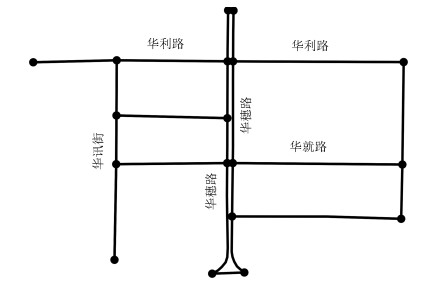
 下载:
下载:
